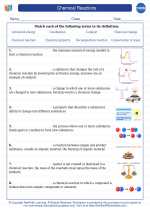Deserts
Deserts are arid, barren landscapes characterized by low precipitation and high temperatures. They cover about one-fifth of the Earth's land surface and can be found on every continent. Deserts can be classified into four main types: subtropical deserts, cold deserts, coastal deserts, and rain shadow deserts.
Subtropical Deserts
Subtropical deserts are located in the tropics and are the most common type of desert. They are characterized by high temperatures during the day and cooler temperatures at night. Examples of subtropical deserts include the Sahara Desert in Africa and the Mojave Desert in North America.
Cold Deserts
Cold deserts, also known as temperate deserts, are found in higher latitudes and at higher elevations. They experience extreme temperature variations, with very hot summers and cold winters. The Gobi Desert in Asia and the Great Basin Desert in North America are examples of cold deserts.
Coastal Deserts
Coastal deserts are located along the western edges of continents, where cold ocean currents create arid conditions. These deserts have moderate temperatures and low precipitation. The Atacama Desert in South America and the Namib Desert in Africa are examples of coastal deserts.
Rain Shadow Deserts
Rain shadow deserts are formed when mountain ranges block the passage of moisture-laden air, creating dry areas on the leeward side of the mountains. As the air descends, it warms up and loses its moisture, resulting in arid conditions. The Atacama Desert and the Great Basin Desert are examples of rain shadow deserts.
Study Guide
- What are the four main types of deserts?
- Describe the characteristics of subtropical deserts.
- Where are cold deserts typically found?
- How are coastal deserts formed?
- Explain the formation of rain shadow deserts.
- Choose a specific desert and research its climate, flora, and fauna.
- Discuss the challenges and adaptations of plant and animal life in deserts.
- What are some human activities that impact desert environments?
[Deserts] Related Worksheets and Study Guides:
.◂Chemistry Worksheets and Study Guides High School. Chemical Reactions

 Worksheet/Answer key
Worksheet/Answer key
 Worksheet/Answer key
Worksheet/Answer key
 Worksheet/Answer key
Worksheet/Answer key
 Worksheet/Answer key
Worksheet/Answer key
 Worksheet/Answer key
Worksheet/Answer key
 Vocabulary/Answer key
Vocabulary/Answer key
 Vocabulary/Answer key
Vocabulary/Answer key
 Vocabulary/Answer key
Vocabulary/Answer key
